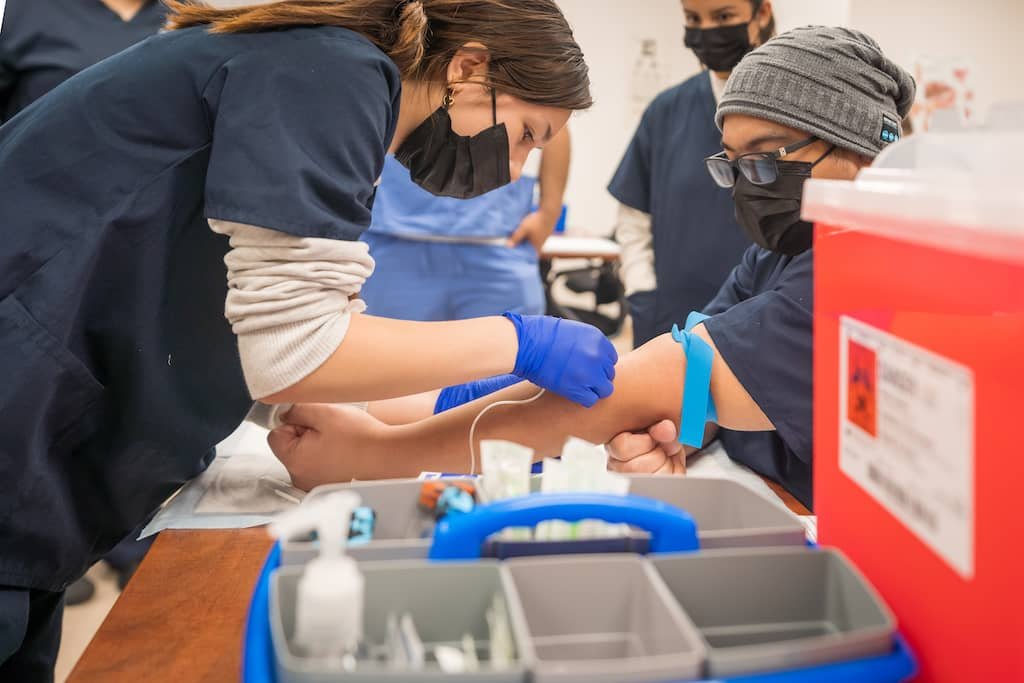Ensuring Proper Calibration of Clinical Lab Equipment: Best Practices for Hospitals in the United States
Summary
- Regular calibration of clinical lab equipment is essential for accurate Test Results and patient care.
- Hospitals should implement a calibration schedule, conduct regular performance verification, and invest in quality calibration services.
- Properly calibrated equipment can improve patient outcomes, enhance efficiency, and ensure compliance with regulatory requirements.
Introduction
Clinical lab equipment plays a crucial role in patient diagnosis, treatment, and care within hospitals across the United States. To ensure the accuracy of Test Results and maintain high standards of patient care, hospitals must prioritize the proper calibration of their lab equipment. In this article, we will explore the best practices that hospitals should follow to ensure the calibration of clinical lab equipment in the United States.
Importance of Calibration
Calibration is the process of comparing the measurements of a device to a known standard to ensure accuracy. In the healthcare setting, the calibration of clinical lab equipment is essential for the following reasons:
- Accuracy: Properly calibrated equipment produces accurate Test Results, which are crucial for patient diagnosis and treatment.
- Quality Assurance: Calibration helps hospitals maintain high standards of quality and accuracy in their lab testing procedures.
- Compliance: Regulatory bodies such as the Food and Drug Administration (FDA) require hospitals to calibrate their lab equipment to ensure patient safety and data integrity.
Best Practices for Calibration
Implement a Calibration Schedule
One of the best practices that hospitals should follow is to implement a regular calibration schedule for their clinical lab equipment. This schedule should be based on the manufacturer's recommendations, regulatory requirements, and the specific needs of the hospital. Some key points to consider when developing a calibration schedule include:
- Frequency: Determine how often each piece of equipment needs to be calibrated based on its usage, criticality, and the manufacturer's guidelines.
- Documentation: Keep detailed records of all calibration activities, including dates, results, and technician signatures.
- Notification: Implement a system to remind staff members when equipment is due for calibration to ensure timely maintenance.
Conduct Regular Performance Verification
In addition to regular calibration, hospitals should conduct regular performance verification tests on their clinical lab equipment. These tests help to ensure that the equipment is functioning properly and producing accurate results. Some tips for conducting performance verification tests include:
- Establish Protocols: Develop standardized protocols for performance verification tests that can be easily followed by staff members.
- Training: Provide training to lab technicians on how to conduct performance verification tests and interpret the results.
- Documentation: Keep detailed records of all performance verification tests, including the results and any actions taken in response to out-of-specification readings.
Invest in Quality Calibration Services
Another best practice for hospitals is to invest in quality calibration services for their clinical lab equipment. While some hospitals may have in-house calibration capabilities, others may prefer to outsource this service to specialized calibration providers. When selecting a calibration service, hospitals should consider the following factors:
- Accreditation: Choose a calibration provider that is accredited to international standards such as ISO/IEC 17025 to ensure the quality and reliability of the service.
- Expertise: Select a provider with experience in calibrating the specific type of equipment used in the hospital's lab.
- Traceability: Ensure that the calibration provider can provide traceable calibration certificates that meet regulatory requirements.
Benefits of Proper Calibration
By following best practices for the calibration of clinical lab equipment, hospitals can enjoy a range of benefits that ultimately contribute to improved patient care and operational efficiency. Some of the key benefits of proper calibration include:
- Improved Patient Outcomes: Properly calibrated equipment leads to more accurate Test Results, which can enhance patient diagnosis and treatment outcomes.
- Enhanced Efficiency: Reliable equipment reduces the risk of errors and rework, allowing staff to focus on providing quality care to patients.
- Regulatory Compliance: Proper calibration ensures that hospitals meet regulatory requirements and maintain data integrity for audit purposes.
Conclusion
In conclusion, the proper calibration of clinical lab equipment is essential for hospitals in the United States to ensure accurate Test Results, maintain Quality Standards, and comply with regulatory requirements. By implementing a calibration schedule, conducting regular performance verification, and investing in quality calibration services, hospitals can enhance patient outcomes, improve efficiency, and achieve compliance with industry standards. Prioritizing the calibration of clinical lab equipment ultimately contributes to the delivery of high-quality care and the well-being of patients.

Disclaimer: The content provided on this blog is for informational purposes only, reflecting the personal opinions and insights of the author(s) on the topics. The information provided should not be used for diagnosing or treating a health problem or disease, and those seeking personal medical advice should consult with a licensed physician. Always seek the advice of your doctor or other qualified health provider regarding a medical condition. Never disregard professional medical advice or delay in seeking it because of something you have read on this website. If you think you may have a medical emergency, call 911 or go to the nearest emergency room immediately. No physician-patient relationship is created by this web site or its use. No contributors to this web site make any representations, express or implied, with respect to the information provided herein or to its use. While we strive to share accurate and up-to-date information, we cannot guarantee the completeness, reliability, or accuracy of the content. The blog may also include links to external websites and resources for the convenience of our readers. Please note that linking to other sites does not imply endorsement of their content, practices, or services by us. Readers should use their discretion and judgment while exploring any external links and resources mentioned on this blog.
